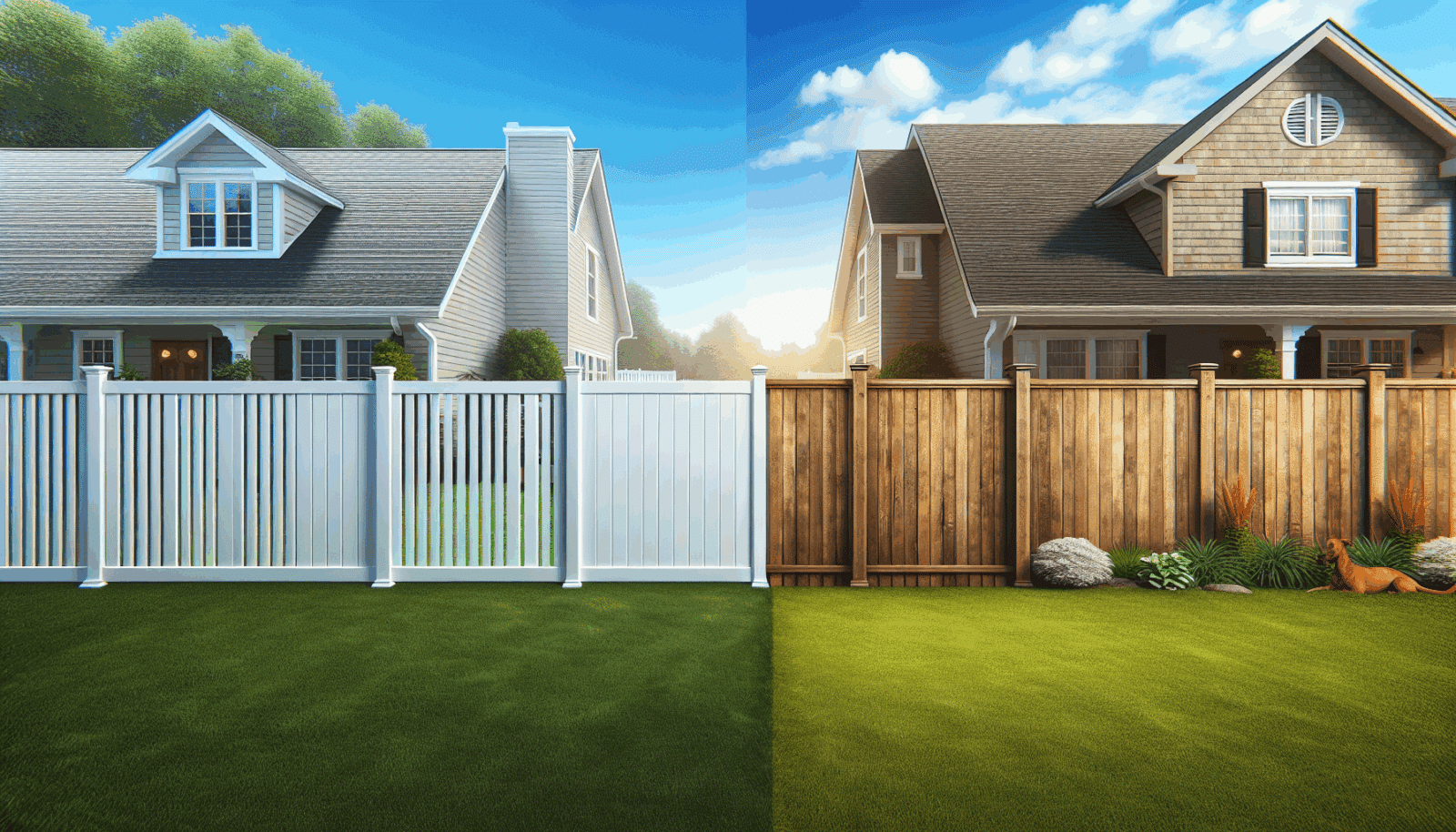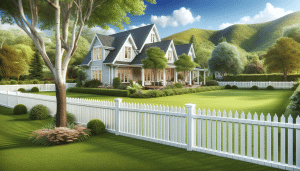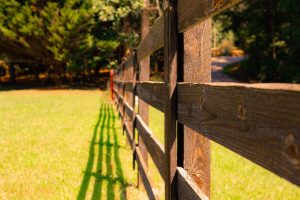Welcome to Savannah Gate & Fence! Homeowners often face a major decision when picking the perfect fence: should you go for a white Vinyl Fence or a traditional Wood Fence? In this article, we’ll dive deep into both options, helping you make an informed choice that will beautify your property while catering to your unique needs.
Contents
Aesthetics
When it comes to aesthetics, both white vinyl and wood fences have their distinct charm. A white vinyl fence offers a clean, modern look that can elevate the appearance of any home. Its bright and polished finish stands out, creating an inviting and tidy environment.
Conversely, wood fences provide a classic, timeless appeal. The natural grains and textures of wood seamlessly blend with outdoor surroundings, making it a perfect choice for those who love a rustic or traditional aesthetic. Both options have their pros, so it really depends on your stylistic preference.
Maintenance
Considering maintenance is crucial when selecting a fence. White vinyl fences are known for their low maintenance requirements. They resist weathering and are easy to clean—just a quick wash with soap and water keeps them looking fresh.
Wood fences, while beautiful, demand more attention. They require regular treatments, such as staining or painting, to protect against rot, pests, and weather damage. Although they may need more effort, some homeowners enjoy the hands-on care involved with maintaining a wood fence.
Durability
Durability is a key factor for any fence. White vinyl fences are extremely durable and can withstand various weather conditions without cracking or fading. They are resistant to pests, mold, and rot, ensuring longevity.
Wood fences, on the other hand, can be susceptible to these issues. Over time, wood can warp, splinter, or become infested with insects. However, with proper care and maintenance, a well-treated wood fence can still offer years of reliable service.
Cost
Initial and long-term costs are important to consider. Vinyl fences have a higher upfront cost, but the lower maintenance and extended lifespan can offset this expense. They can be seen as a long-term investment.
Wood fences are generally more affordable at installation but require ongoing maintenance expenses. The cost of treatments, repairs, and replacements must be factored into your budget when opting for a wood fence.
Eco-Friendly Factors
Savvy homeowners often look at the eco-friendly aspects of their fencing choice. White vinyl fences are recyclable and can be made from recycled materials, contributing to sustainability. However, the manufacturing process often involves chemicals and heavy energy usage.
Wood fences offer a more natural option. Using responsibly sourced wood can reduce environmental impact, and wood is biodegradable at the end of its life. Nonetheless, the treatments necessary to preserve wood can sometimes include harmful chemicals.
Installation
The ease of installation can affect your choice significantly. Vinyl fences are typically easier to install, thanks to their lightweight panels and interlocking designs. They often come in ready-to-assemble kits which can expedite the process.
Wood fence installation can be more labor-intensive. The material’s weight and the need for precise assembly can lengthen the installation timeline. However, many homeowners find the process rewarding and enjoy the craftsmanship involved.
Privacy and Security
Both fence types can offer privacy and security, but they do so in different ways. Vinyl fences often feature solid panels with no gaps, ensuring maximum privacy and a barrier against intruders.
Wood fences can also provide excellent privacy and security, especially with closely set boards. The choice may come down to personal preference in appearance and design style.
Customization
If customization is high on your priority list, wood fences offer more flexibility. They can be easily cut and designed to suit various styles and heights, allowing for a truly unique fence.
Vinyl fences have customization options too, but they are generally more limited compared to wood. Predesigned panels dominate the market, although various colors and textures are available.
Environmental Impact
We can’t overlook the environmental impact of our choices. Vinyl fencing, while durable and recyclable, does have a heavier environmental footprint due to its manufacturing process. Chemicals used in its production can be harmful to the environment.
Wood fencing has a more natural basis and, if sourced responsibly, can be an environmentally friendly option. It’s biodegradable and can be less impactful. However, consider the treatments applied to protect the wood, as they may contain harmful substances.
Key Takeaways
It’s essential to weigh the benefits and drawbacks of each fence type:
- Maintenance: Vinyl fences require less maintenance, while wood fences need regular care.
- Durability: Vinyl is highly durable and resistant to various damages; wood can be more vulnerable.
- Cost: Vinyl involves higher upfront costs but lower long-term costs; wood has lower initial expenses but higher maintenance costs.
- Aesthetic: Vinyl offers a modern, clean look; wood provides a rustic, classic appearance.
- Eco-Friendliness: Vinyl is recyclable but has a higher manufacturing impact; wood offers a natural choice but may involve chemical treatments.
Choosing between a white vinyl fence and a wood fence ultimately depends on your priorities and personal taste. We hope this comparison helps you decide what’s right for your home!
For more information, call us at 912-800-0818 or Request a Free Quote today.




